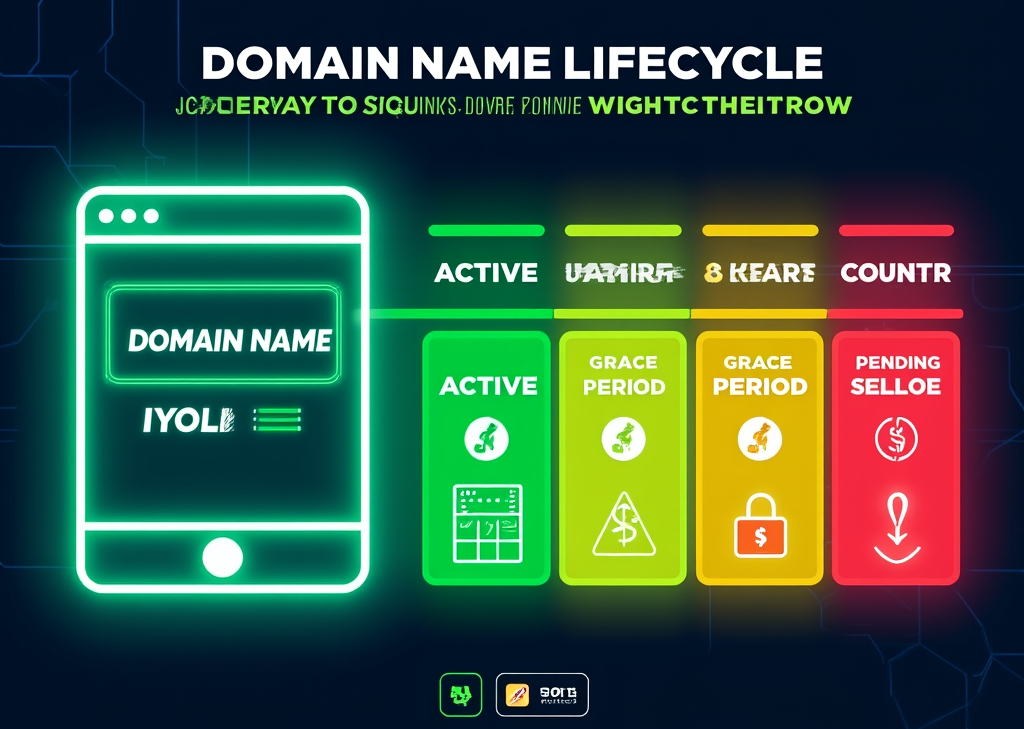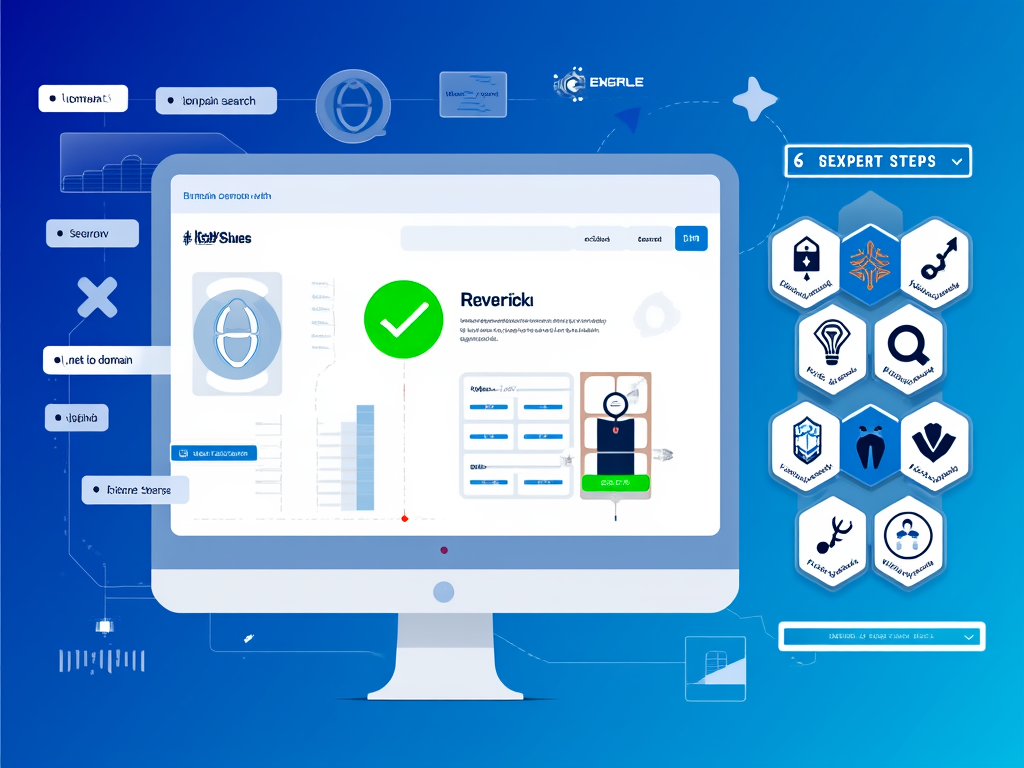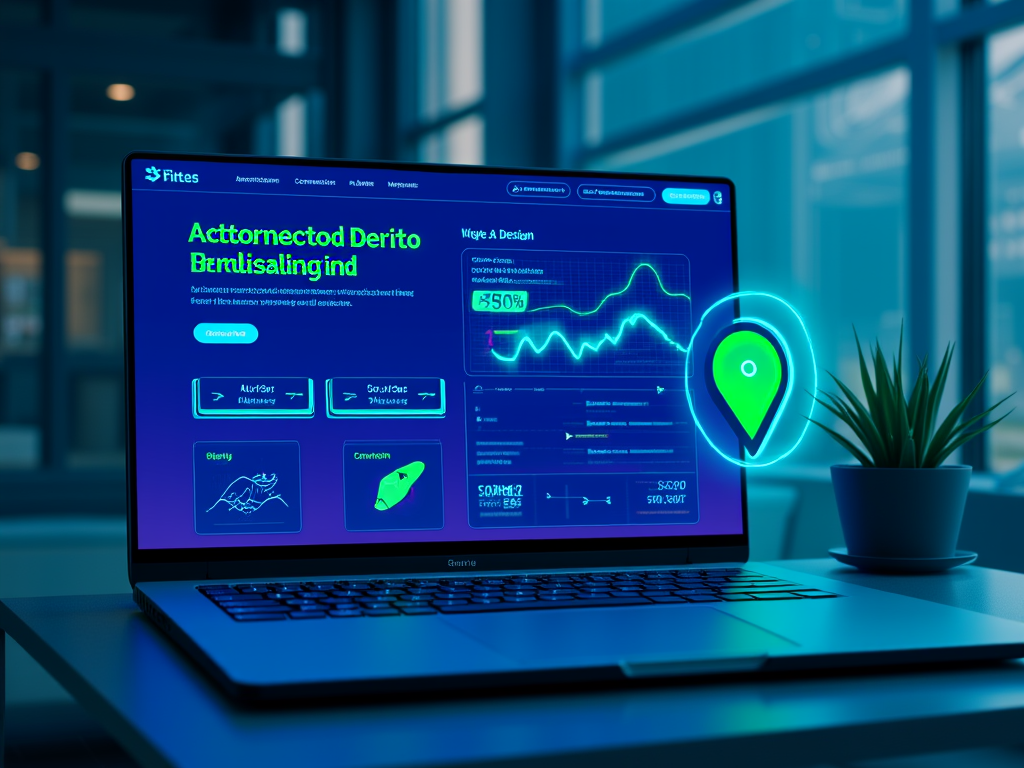Understanding domain name expiration and grace periods
Introduction
In the vast ocean of the internet, domains are the lighthouses that guide visitors to your unique piece of the online world. But what happens when a lighthouse dims? The notion of a domain name expiration may seem like yet another techie term, yet it holds the power to disrupt your entire online presence if neglected. Understanding how domain expiration and grace periods function is essential. This knowledge acts not just as a safeguard, but as a lifeline for maintaining the integrity of your digital identity.
The domain expiration process: more than meets the eye
When a domain registration term ends, it doesn't just vanish into thin air. The reality is more intricate. Once your domain expires, it embarks on a journey through several stages, each offering different options to retain control. The clock begins its tick-down not just on your domain, but on your peace of mind.
Grace Period: The life raft after the storm
Imagine you’ve just sailed into a turbulent sea, with waves crashing around your boat. But here's the twist: you’ve got a life raft waiting. This initial buffer period, known as the grace period, is your opportunity to renew or recover your domain without additional financial burdens.
- Duration: Typically lasting 30 to 40 days, the grace period varies depending on the top-level domain (TLD) and your registrar's policies. During this time:\n
- Your website is still anchored, albeit in a stranded state. Though DNS resolution ceases, you can renew your domain at standard prices, avoiding penalties.\n
- Often, it redirects users to a temporary parking page that subtly signifies, "I'm still here."
Picture this: your domain, once a vibrant hub for your brand, now stands at the edge of a cliff, with just a step away from renewal being the difference between life and loss.
Redemption Period: The cost of a second chance
Failing to act within the grace period shoves your domain into darker waters—enter the redemption period. This stage lasts about 30 days, where the stakes and pressures multiply.
- The domain remains dormant, non-functioning, as the timeout escapes into the void.\n
- Here’s the catch: you can recover your domain, but it won't come cheap. Expect to pay an additional fee, typically around $1000, on top of the regular renewal costs—a bitter pill to swallow, but sometimes a necessary one.\n
- The redemption period embodies urgency; retrieving a domain can feel like rushing against the tide, where the sound of the waves surging toward you is almost the countdown to losing what you’ve built.
Let’s visualize: a domain, once a vibrant source of identity, sits locked away in a vault, and the key to unlocking it is growing heavy in your pocket.
Pending delete: Last breath before oblivion
If you miss the redemption boat, your domain transitions to the pending delete stage, which typically hangs around for a brief 5 to 7 days. During this ominous period:\n
- No recovery option exists — it’s as if the domain has slipped silently into the night.\n
- After this time, it’s completely purged from the registry, kicking it back into the realm of public availability for anyone to claim.
Imagine watching helplessly as the grip on your source of identity is pried away, leaving you with nothing but lingering regrets.
Practical tips: How to avoid the storm
So, how do you navigate these treacherous waters? Here are some actionable insights to steer clear of domain disaster:
- Monitor your domain’s expiry date: Think of it as your GPS alert for renewal deadlines. Set calendar reminders or utilize registrar notifications—this is your early warning system against impending doom.\n
- Enable auto-renewal: A safety net that catches you before falling, ensuring you glide smoothly past expiration. Always keep your payment methods updated to make it seamless.\n
- Learn your registrar’s policies: Grace periods and rules can vary significantly—some registrars flaunt up to 45 days while others keep it tight at 30. Clarity in this area is your compass.\n
- Don’t delay renewal during redemption: If you’ve missed the grace period, springing back to ownership quickly during redemption might pinch your wallet, but it can save your crucial asset.\n
- Develop a renewal strategy: For those managing multiple domains, having an organized campaign can ensure no entry slips through the net, keeping your digital empire intact.\n
- Acknowledge the risks of expiration: Beyond losing your website functionalities, expired domains can swiftly fall into the hands of competitors or domain squatters—imagine investing in a brand, only to see it snatched away.
Reflections
With this knowledge in hand, you’re now equipped to traverse the turbulent seas of domain management. The nuances of domain name expiration and the associated grace periods shouldn’t be mere whispers in the wind; rather, they should resonate within every decision you make regarding your online presence. Why leave your identity to chance, when you can navigate securely?
FINDDOMAIN.GE (Internet services LLC) is a very interesting and rapidly developing IT company. The main directions are: web development, domain and web hosting. It also offers clients sub-services and outsourcing related to the main services.
BEST OFFERS:
Do you want to create your own company website or create your own online business on the Internet?
– WEB HOSTING
– DOMAIN REGISTRATION
– WEB DEVELOPMENT
– SITE BUILDER



Addressing common misconceptions
In the midst of navigating domain lifecycles, a few pervasive myths can wreak havoc on a registrant's ability to retain their digital identity. It's vital to debunk these misconceptions, as they can lead otherwise savvy users astray.
Myth: I can always just renew my domain at any time
While this might sound reasonable, it masks a harsh reality. Once a domain enters the redemption period, higher costs await you. Ignoring your renewal date can result in unnecessary expenses that could have been easily avoided by planning ahead. The key takeaway? Be proactive. The fleeting grace periods are there for a reason, and treating them with respect is paramount.
Myth: All registrars have the same policies
Wrong! Each registrar sets its own rules and timelines regarding grace periods and redemption. Some may offer lengthier grace periods, while others impose swift punitive measures following expiration. Failing to read the fine print can lead to costly surprises when you attempt to renew. Do your homework; know your registrar's policies intimately—your online reputation depends on it.
What happens when a domain is dropped?
So what occurs after your domain is released back into the wild? It’s like letting go of a balloon at a crowded festival—who knows who will grab it next? After the pending delete phase, your domain can be registered by anyone.
But here's the ironic twist: this process, while chaotic, opens doors for fresh opportunities. New owners might breathe life into domains that have been dormant, revitalizing neglected resources. If you thought your domain was the end of its life, think again.
Strategies for reclaiming lost domains
Occasionally, you may perform mental gymnastics, imagining ways to snag a domain back after it’s been released. While recovering a drop might be a tall order, here are strategies that could work:
- Backordering: Many registrars offer the service of backordering, where your request to acquire a dropped domain is queued. This means you’ll have a shot at securing it as soon as it becomes available.\n
- Monitoring tools: Several tools and services keep vigilant watch on domains as they approach expiration. These reminders serve as your watchdog, alerting you to potential availability.\n
- Reaching out to new owners: If a competitor snags your domain, consider courting the new owner. Sometimes, they may be willing to sell for a price that seems feasible, especially if they weren’t looking to use it for anything substantial.
The importance of domain management tools
Just as you'd equip a ship for a long voyage, using domain management tools can safeguard your journey across digital waters. These tools not only automate renewals but also help you keep track of each domain's expiration dates and associated costs.
Some essential tools include:
- Domain Dashboards: Platforms like GoDaddy and Namecheap offer integrated dashboards that summarize your domain portfolio, displaying critical renewal dates and vital information at a glance.\n
- Reminder Services: Many registrars include alert systems that notify you through emails and texts—if they encourage you to stay vigilant, why not seize the opportunity?\n
- API Integration: For those who manage multiple domains, consider APIs to integrate with your existing software systems, allowing seamless tracking and management.
In summary
Managing domain expiration and grace periods isn't just a background task; it's an ongoing dialogue with your digital identity. Understanding each stage—from grace periods to redemption—empowers you to make informed decisions that resonate through every corner of your online presence. Setting reminders, learning the ins and outs of registrar policies, and employing tools can help you ensure that your digital lighthouse remains alight, guiding your audience safely to your shores.
The stakes are high. As the world of technology evolves, staying informed about the little-known intricacies of domain management could provide you with the advantage needed to preserve your digital identity. Be the vigilant captain of your ship, ready to navigate through any storm, keeping an eye on the horizon and in hand on the wheel.
Related video resources
For further insights, consider watching these videos that delve into domain name management and renewal processes:
- Understanding Domain Expiration\n
- How to Renew Your Domain Name\n
- Avoid Losing Your Domain: Best Practices
References
- ICANN
- GoDaddy Renewal Processes
- Namecheap Domain Expiration
- Domain.com Renewal FAQ
- BigRock Explanation
- Cloudflare Domain Name Expiration
- Hostinger Domain Renewal Guide
- Name.com Insights on Expired Domains
FINDDOMAIN.GE (Internet services LLC) is a very interesting and rapidly developing IT company. The main directions are: web development, domain and web hosting. It also offers clients sub-services and outsourcing related to the main services.
BEST OFFERS:
Do you want to create your own company website or create your own online business on the Internet?
– WEB HOSTING
– DOMAIN REGISTRATION
– WEB DEVELOPMENT
– SITE BUILDER





![Website Hosting Providers in [Local Area]: What to Choose](https://besthosting.ge/wp-content/uploads/2025/08/website-hosting-providers-in-local-area-what-to-choose.jpg)
![WordPress Website Experts in [Your City]](https://besthosting.ge/wp-content/uploads/2025/08/wordpress-website-experts-in-your-city.jpg)

